- Home
- Daniel Quinn
The Story of B Page 27
The Story of B Read online
Page 27
Leavers and Takers
We have at last arrived at a point where we can abandon this vague and clumsy way of talking about “people of our culture” and “people of all other cultures.” We might settle for “Followers of the Law” and “Rejecters of the Law,” but a simpler pair of names for these groups has been provided by a colleague, who called them Leavers and Takers. He explained the names this way, that Leavers, by following the law, leave the rule of the world in the hands of the gods, whereas the Takers, by rejecting the law, take the rule of the world into their own hands. He wasn’t satisfied with this terminology (and neither am I), but it has a certain following, and I have nothing to replace it with.
The important point to note is that a cultural continuity exists among Leaver peoples that extends back three million years to the beginning of our kind. Homo habilis was born a Leaver and a follower of the same law that is followed today by the Yanomami of Brazil and the Bushmen of the Kalahari—and hundreds of other aboriginal peoples in undeveloped areas all over the world.
It is precisely this cultural continuity that was broken in the Great Forgetting. To put it another way: After rejecting the law that had protected us from extinction for three million years and making ourselves the enemy of the rest of the biological community, we suppressed our outlaw status by forgetting that there ever was a law.
Good news and bad news
If you know even a little about me, you’ll know I’m called by many bad names. The reason for this is that I’m a bringer of good news, the best news you’ve had in a long time. You might think that bringing good news would make me a hero, but I assure you this isn’t the case at all. The people of our culture are used to bad news and are fully prepared for bad news, and no one would think for a moment of denouncing me if I stood up and proclaimed that we’re all doomed and damned. It’s precisely because I do not proclaim this that I’m denounced. Before attempting to articulate the good news I bring, let me first make crystal clear the bad news people are always prepared to hear.
Man is the scourge of the planet, and he was BORN a scourge, just a few thousand years ago.
Believe me, I can win applause all over the world by pronouncing these words. But the news I’m here to bring you is much different:
Man was NOT born a few thousand years ago and he was NOT born a scourge.
And it’s for this news that I’m condemned.
Man was born MILLIONS of years ago, and he was no more a scourge than hawks or lions or squids. He lived AT PEACE with the world … for MILLIONS of years.
This doesn’t mean he was a saint. This doesn’t mean he walked the earth like a Buddha. It means he lived as harmlessly as a hyena or a shark or a rattlesnake.
It’s not MAN who is the scourge of the world, it’s a single culture. One culture out of hundreds of thousands of cultures. OUR culture.
And here is the best of the news I have to bring:
We don’t have to change HUMANKIND in order to survive. We only have to change a single culture.
I don’t mean to suggest that this is an easy task. But at least it’s not an impossible one.
Questions from the audience
Q. Are you identifying what religionists call the Fall with the birth of our culture?
A. That’s precisely what I’m doing. The points of similarity between these two events have long been noted, of course—the fact that both are associated with the birth of agriculture and both occurred in the same part of the world. But the difficulty in identifying them as a single event has been that the Fall is perceived as a spiritual event whereas the birth of our culture is perceived as a technological event. I fear I shall have to come here another time to explore with you the profound spiritual ramifications of this technological event, however.
Q. You say that Man lived at peace with the world during the millions of years that preceded our agricultural revolution. But hasn’t recent evidence revealed that ancient foragers hunted many species to extinction?
A. I believe I can still recall the words I used just a moment ago, when I said that Man lived at peace with the world: “This doesn’t mean he walked the earth like a Buddha. It means he lived as harmlessly as a hyena or a shark or a rattlesnake.” Whenever a new species makes its appearance in the world, adjustments occur throughout the community of life—and some of these adjustments are fatal for some species. For example, when the swift, powerful hunters of the cat family appeared late in the Eocene, the repercussions of this event were experienced throughout the community—sometimes as extinction. Species of “easy prey” became extinct because they couldn’t reproduce fast enough to replace the individuals the cats were taking. Some of the cats’ competitors also became extinct, for the simple reason that they couldn’t compete—they just weren’t big enough or fast enough. This appearance and disappearance of species is precisely what evolution is all about, after all.
Human hunters of the Mesolithic period may well have hunted the mammoth to extinction, but they certainly didn’t do this as a matter of policy, the way farmers of our culture hunt coyotes and wolves, simply to get rid of them. Mesolithic hunters may well have hunted the giant elk to extinction, but they certainly didn’t do this out of callous indifference, the way ivory hunters slaughter elephants. Ivory hunters know full well that every kill brings the species closer to extinction, but Mesolithic hunters couldn’t possibly have guessed such a thing about the giant elk.
The point to keep in mind is this: It is the policy of totalitarian agriculture to wipe out unwanted species. If ancient foragers hunted any species to extinction, it certainly wasn’t because they wanted to wipe out their own food supply!
Q. Wasn’t agriculture developed as a response to famine?
A. Agriculture is useless as a response to famine. You can no more respond to famine by planting a crop than you can respond to falling out of an airplane by knitting a parachute. But this really misses the point. To say that agriculture was developed as a response to famine is like saying that cigarette smoking was developed as a response to lung cancer. Agriculture doesn’t cure famine, it promotes famine—it creates the conditions in which famines occur. Agriculture makes it possible for more people to live in an area than that area can support—and that’s exactly where famines occur. For example, agriculture made it possible for many populations of Africa to outstrip their homelands’ resources—and that’s why these populations are now starving.
The Boiling Frog
18 May, Schauspielhaus Wahnfried, Radenau
Systems thinkers have given us a useful metaphor for a certain kind of human behavior in the phenomenon of the boiled frog. The phenomenon is this. If you drop a frog in a pot of boiling water, it will of course frantically try to clamber out. But if you place it gently in a pot of tepid water and turn the heat on low, it will float there quite placidly. As the water gradually heats up, the frog will sink into a tranquil stupor, exactly like one of us in a hot bath, and before long, with a smile on its face, it will unresistingly allow itself to be boiled to death.
We all know stories of frogs being tossed into boiling water—for example, a young couple being plunged into catastrophic debt by an unforeseen medical emergency. A contrary example, an example of the smiling boiled frog, is that of a young couple who gradually use their good credit to buy and borrow themselves into catastrophic debt. Cultural examples exist as well. About six thousand years ago the goddess-worshiping societies of Old Europe were engulfed in a boiling up of our culture that Marija Gimbutas called Kurgan Wave Number One; they struggled to clamber out but eventually succumbed. The Plains Indians of North America, who were engulfed in another boiling up of our culture in the 1870s, constitute another example; they struggled to clamber out over the next two decades, but they too finally succumbed.
A contrary example, an example of the smiling-boiled-frog phenomenon, is provided by our own culture. When we slipped into the cauldron, the water was a perfect temperature, not too hot, not too cold. Can an
yone tell me when that was? Anyone?
Blank faces.
I’ve already told you, but I’ll ask again, a different way. When did we become we? Where and when did the thing called us begin? Remember: East and West, twins of a common birth. Where? And when?
Well, of course: in the Near East, about ten thousand years ago. That’s where our peculiar, defining form of agriculture was born, and we began to be we. That was our cultural birthplace. That was where and when we slipped into that beautifully pleasant water: the Near East, ten thousand years ago.
As the water in the cauldron slowly heats, the frog feels nothing but a pleasant warmth, and indeed that’s all there is to feel. A long time has to pass before the water begins to be dangerously hot, and our own history demonstrates this. For fully half our history, the first five thousand years, signs of distress are almost nonexistent. The technological innovations of this period bespeak a quiet life, centered around hearth and village—sun-dried brick, kiln-fired pottery, woven cloth, the potter’s wheel, and so on. But gradually, imperceptibly, signs of distress begin to appear, like tiny bubbles at the bottom of a pot.
What shall we look for, as signs of distress? Mass suicides? Revolution? Terrorism? No, of course not. Those come much later, when the water is scalding hot. Five thousand years ago it was just getting warm. Folks mopping their brows were grinning at each other and saying, “Isn’t it great?”
You’ll know where to find the signs of distress if you identify the fire that was burning under the cauldron. It was burning there in the beginning, was still burning after five thousand years … and is still burning today in exactly the same way. It was and is the great heating element of our revolution. It’s the essential. It’s the sine qua non of our success—if success is what it is.
Speak! Someone tell me what I’m talking about!
“Agriculture!” Agriculture, this gentleman tells me.
No. Not agriculture. One particular style of agriculture. One particular style that has been the basis of our culture from its beginnings ten thousand years ago to the present moment—the basis of our culture and found in no other. It’s ours, it’s what makes us us. For its complete ruthlessness toward all other life-forms on this planet and for its unyielding determination to convert every square meter on this planet to the production of human food, I’ve called it totalitarian agriculture.
Ethologists, students of animal behavior, and a few philosophers who have considered the matter know that there is a form of ethics practiced in the community of life on this planet—apart from us, that is. This is a very practical (you might say Darwinian) sort of ethics, since it serves to safeguard and promote biological diversity within the community. According to this ethics, followed by every sort of creature within the community of life, sharks as well as sheep, killer bees as well as butterflies, you may compete to the full extent of your capabilities, but you may not hunt down your competitors or destroy their food or deny them access to food. In other words, you may compete but you may not wage war. This ethics is violated at every point by practitioners of totalitarian agriculture. We hunt down our competitors, we destroy their food, and we deny them access to food. That indeed is the whole purpose and point of totalitarian agriculture. Totalitarian agriculture is based on the premise that all the food in the world belongs to us, and there is no limit whatever to what we may take for ourselves and deny to all others.
Totalitarian agriculture was not adopted in our culture out of sheer meanness. It was adopted because, by its very nature, it’s more productive than any other style (and there are many other styles). Totalitarian agriculture represents productivity to the max, as Americans like to say. It represents productivity in a form that literally cannot be exceeded.
Many styles of agriculture (not all, but many) produce food surpluses. But, not surprisingly, totalitarian agriculture produces larger surpluses than any other style. It produces surpluses to the max. You simply can’t outproduce a system designed to convert all the food in the world into human food.
Totalitarian agriculture is the fire under our cauldron. Totalitarian agriculture is what has kept us “on the boil” here for ten thousand years.
Food availability and population growth
The people of our culture take food so much for granted that they often have a hard time seeing that there is a necessary connection between the availability of food and population growth. For them, I’ve found it necessary to construct a small illustrative experiment with laboratory mice.
Imagine if you will a cage with movable sides, so that it can be enlarged to any desired size. We begin by putting ten healthy mice of both sexes into the cage, along with plenty of food and water. In just a few days there will of course be twenty mice, and we accordingly increase the amount of food we’re putting in the cage. In a few weeks, as we steadily increase the amount of available food, there will be forty, then fifty, then sixty, and so on, until one day there is a hundred. And let’s say that we’ve decided to stop the growth of the colony at a hundred. I’m sure you realize that we don’t need to pass out little condoms or birth-control pills to achieve this effect. All we have to do is stop increasing the amount of food that goes into the cage. Every day we put in an amount that we know is sufficient to sustain a hundred mice—and no more. This is the part that many find hard to believe, but, trust me, it’s the truth: The growth of the community stops dead. Not overnight, of course, but in very short order. Putting in an amount of food sufficient for one hundred mice, we will find—every single time—that the population of the cage soon stabilizes at one hundred. Of course I don’t mean one hundred precisely. It will fluctuate between ninety and a hundred ten but never go much beyond those limits. On the average, day after day, year after year, decade after decade, the population inside the cage will be one hundred.
Now if we should decide to have a population of two hundred mice instead of one hundred, we won’t have to add aphrodisiacs to their diets or play erotic mouse movies for them. We’ll just have to increase the amount of food we put in the cage. If we put in enough food for two hundred, we’ll soon have two hundred. If we put in enough for three hundred, we’ll soon have three hundred. If we put in enough for four hundred, we’ll soon have four hundred. If we put in enough for five hundred, we’ll soon have five hundred. This isn’t a guess, my friends. This isn’t a conjecture. This is a certainty.
Of course, you understand that there’s nothing special about mice in this regard. The same will happen with crickets or trout or badgers or sparrows. But I fear that many people bridle at the idea that humans might be included in this list. Because as individuals we’re able to govern our reproductive capacities, they imagine our growth as a species should be unresponsive to the mere availability of food.
Luckily for the point I’m trying to make here, I have considerable data showing that, as a species, we’re as responsive as any other to the availability of food—three million years of data, in fact. For all but the last ten thousand years of that period, the human species was a very minor member of the world ecosystem. Imagine it—three million years and the human race did not overrun the earth! There was some growth, of course, through simple migration from continent to continent, but this growth was proceeding at a glacial rate. It’s estimated that the human population at the beginning of the Neolithic was around ten million—ten million, if you can imagine that! After three million years!
Then, very suddenly, things began to change. And the change was that the people of one culture, in one corner of the world, developed a peculiar form of agriculture that made food available to people in unprecedented quantities. Following this, in this corner of the world, the population doubled in a scant three thousand years. It doubled again, this time in only two thousand years. In an eye blink of time on the geologic scale, the human population jumped from ten million to fifty million—probably eighty percent of them being practitioners of totalitarian agriculture: members of our culture, East and West.
The water in the cauldron was getting warm, and signs of distress were beginning to appear.
Signs of distress: 5000–3000 B.C.E.
It was getting crowded. Think of that. People used to imagine that history is inevitably cyclical, but what I’m describing here has never happened before. In all of three million years, humans have never been crowded anywhere. But now the people of a single culture—our culture—are learning what it means to be crowded. It was getting crowded, and overworked, overgrazed land was becoming less and less productive. There were more people, and they were competing for dwindling resources.
The water is heating up around the frog—and remember what we’re looking for: signs of distress. What happens when more people begin competing for less? That’s obvious. Every schoolchild knows that. When more people start competing for less, they start fighting. But of course they don’t just fight at random. The town butcher doesn’t battle the town baker, the town tailor doesn’t battle the town shoemaker. No, the town’s butcher, baker, tailor, and shoemaker get together to battle some other town’s butcher, baker, tailor, and shoemaker.
We don’t have to see bodies lying in the field to know that this was the beginning of the age of war that has continued to the present moment. What we have to see is war-making machinery. I don’t mean mechanical machinery—chariots, catapults, siege machines, and so on. I mean political machinery. Butchers, bakers, tailors, and shoemakers don’t organize themselves into armies. They need warlords—kings, princes, emperors.

 The Story of B
The Story of B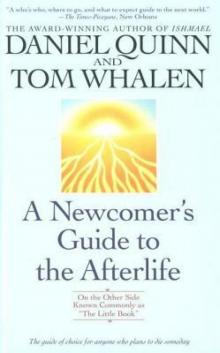 A Newcomer's Guide to the Afterlife: On the Other Side Known Commonly as the Little Book
A Newcomer's Guide to the Afterlife: On the Other Side Known Commonly as the Little Book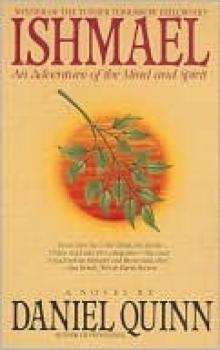 Ishmael: An Adventure of the Mind and Spirit
Ishmael: An Adventure of the Mind and Spirit CLONES: The Anthology
CLONES: The Anthology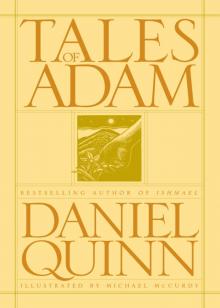 Tales of Adam
Tales of Adam The Holy
The Holy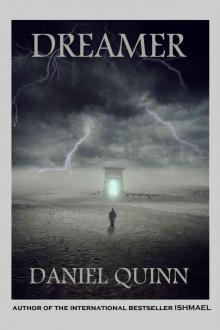 Dreamer
Dreamer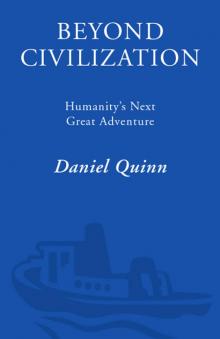 Beyond Civilization: Humanity's Next Great Adventure
Beyond Civilization: Humanity's Next Great Adventure After Dachau
After Dachau If They Give You Lined Paper, Write Sideways.
If They Give You Lined Paper, Write Sideways.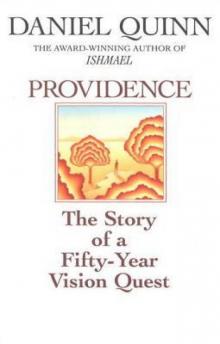 Providence
Providence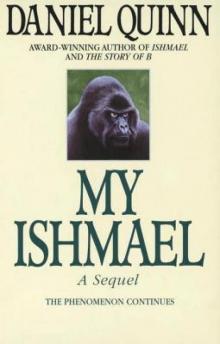 My Ishmael
My Ishmael Beyond Civilization
Beyond Civilization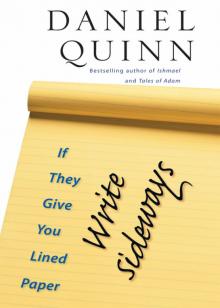 If They Give You Lined Paper, Write Sideways
If They Give You Lined Paper, Write Sideways Ishmael
Ishmael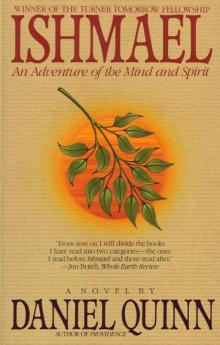 Ishmael i-1
Ishmael i-1 A Newcomer's Guide to the Afterlife
A Newcomer's Guide to the Afterlife